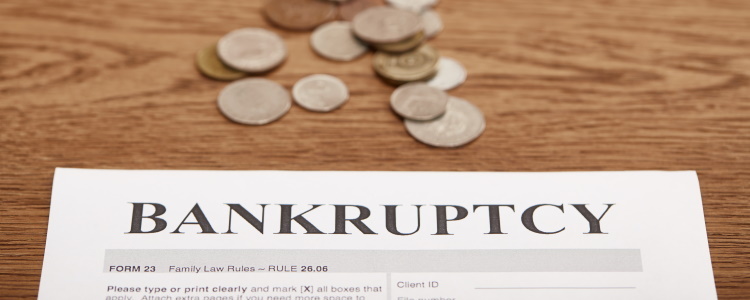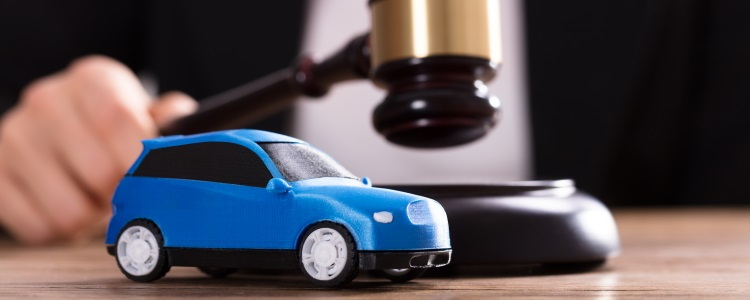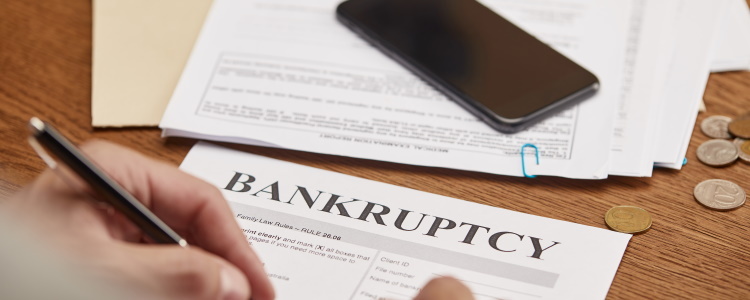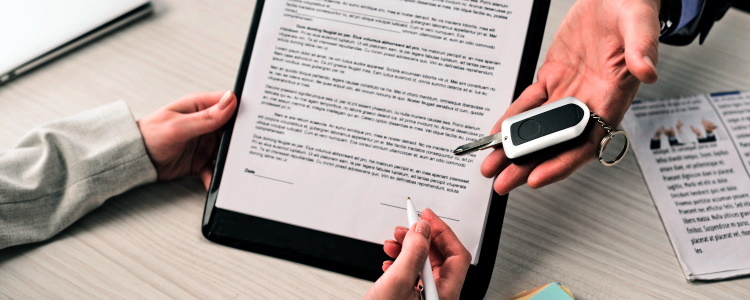After bankruptcy, you may find your credit score is in tatters. This is perfectly normal, but many Americans still find themselves at a loss when they’re trying to find a lender that can get them into an auto loan. Thankfully, there are lenders that can work with borrowers following a bankruptcy, which can help you repair your credit at the same time.
Auto Loans After Bankruptcy
 A bankruptcy can cause heavy damage on your credit reports, even if you completed it successfully. However, you’re usually in a much better place financially than before you filed – you could call a drop in your credit score the trade-off for wiping away your debts!
A bankruptcy can cause heavy damage on your credit reports, even if you completed it successfully. However, you’re usually in a much better place financially than before you filed – you could call a drop in your credit score the trade-off for wiping away your debts!
Car lenders may not be as reluctant to finance you after a bankruptcy as you might think, as your debt to income ratio is most likely lower now, and your finances should be more organized.
Though most traditional lenders may view a bankruptcy on your credit reports as a red flag, subprime lenders are equipped to deal with poor credit situations such as this. These lenders, also called bad credit lenders, may be able to get you into your next auto loan post-bankruptcy.
The advantage of applying with a subprime lender is the potential to repair your credit after bankruptcy. There are some bad credit dealerships that don’t offer the chance for credit repair, such as some buy here pay here (BHPH) car lots. These in-house financing dealers may not report their auto loans to the credit bureaus, which can be bad news for borrowers who were looking to repair their credit with a car loan.
Subprime auto loans are reported to the national credit bureaus. This means you can start repairing your credit score with on-time payments, as long as you're managing the other aspects of your financial life well.
Requirements and How Subprime Car Loans Work
Since you’ve been through bankruptcy, working with a subprime lender is likely to give you a better chance of getting approved for a car loan. Not everyone can qualify, though! Be prepared to meet some requirements before you can be considered for financing.
Five common subprime lender requirements include:
- Income – Borrowers are typically required to make a minimum of around $1,500 to $2,500 monthly (before taxes). This can be proven with computer-generated check stubs.
- Down payment – Bad credit lenders require a down payment of at least $1,000 or 10% of the vehicle’s selling price. A trade-in with equity can help meet this requirement.
- Working phone – You need a working contract cell phone or landline phone to be considered for financing. This can be proven with a recent phone bill in your name.
- Residency – Bad credit lenders need to verify your address, so bring a recent utility bill or bank statement in your name to the address listed on the application.
- Driver’s license – Must be valid, meaning it's not revoked, expired, or suspended. Your license must also list your current address.
Once you’ve completed all the paperwork and verified all your information with the dealership and the subprime lender, you then see what you qualify for. The special finance manager, who works on behalf of the subprime lender, finds out what monthly payment you qualify for based on your current situation.
After you have that, you and the dealer then find a vehicle that fits what you qualify for and your needs. Then, finish up the paperwork and you can take delivery of your next car!
Credit Repair and Auto Loans
Once you start making payments on your subprime auto loan, you begin building a better credit history. But don’t stop there, since you can also work on the other aspects of your credit.
Having a bankruptcy on your credit reports can mean a lower credit score, but chin up! Bankruptcies aren’t reported forever.
If you had filed for a Chapter 7 bankruptcy, it can remain on your credit reports for up to 10 years. However, as each year passes, the negative effect on your credit score lessens, especially if you continually make an effort to improve it.
If you filed for a Chapter 13 bankruptcy, you may only have a few years of it being on your credit reports once you’re discharged, as these bankruptcies stay on your credit report for seven years. A bankruptcy starts being reported the day you file, and a Chapter 13 takes three or five years to complete. This means you could have only a few more years of the bankruptcy impacting your credit reports once you’ve completed it!
In the meantime, you can always work on the other facets of your credit. This includes:
- Keeping your credit card balances below 30% of their spending limits
- Staying diligent and keeping up on all loan payments and other bills
- Not relying too much on credit
- Keeping accounts out of collection agencies
- Removing incorrect information from your credit reports (aka checking your credit reports frequently)
- Not closing old, unused credit lines
- Maintaining a healthy credit mix of installment loans and revolving credit
Above all, don’t miss any payments. Payment history is the biggest factor in determining your credit score, accounting for 35% of it. Missed and late payments can remain on your credit reports for up to seven years, and we don’t want to add that to the bankruptcy that’s being reported!
Getting Your Credit Back on Track
Getting your credit score back in the “good” zone takes time after bankruptcy, but it’s well worth it. Having a good credit score can mean qualifying for better loan rates, and possibly special promotional deals, which could save you money! Being a good credit borrower also increases the chances of getting approved for new credit in the first place.
Getting back on track after bankruptcy can be tricky, but we want to help. Here at Drivers Lane, we have a nationwide network of dealerships that are signed up with subprime lenders that can assist bankruptcy borrowers. To get matched to a dealer in your area, complete our free car loan request form, and we’ll get to work for you!



















